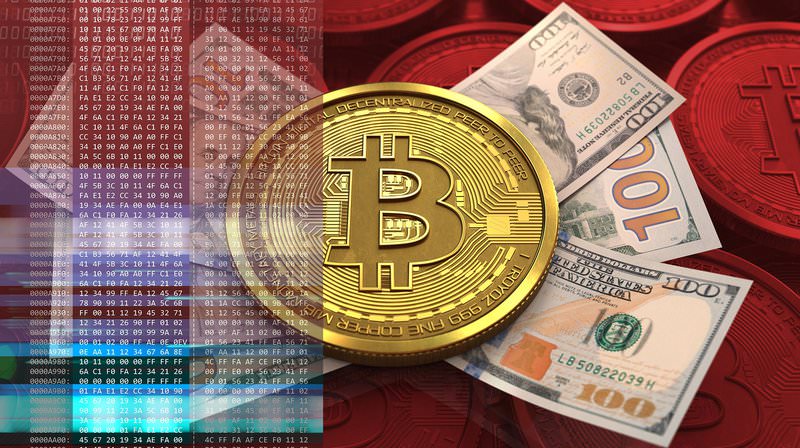
In a recent article on the basics of bitcoin and other cryptocurrencies (PDF), Aleksander Berentsen and Fabian Schär of the Federal Reserve Bank of St. Louis cover the usefulness of bitcoin and other alternative cryptoassets.
Throughout the article, Berentsen and Schär make the case that cryptoassets are well suited to become a new, important asset class. The duo goes as far to say that bitcoin is, in some ways, more robust than many fiat currencies.
Cryptocurrencies Are a Welcome Addition to the Current Currency System
Surprisingly, Berentsen and Schär are of the belief that cryptocurrencies are a welcome addition to the current currency ecosystem. While some critics claim bitcoin’s price should drop to zero because there is no intrinsic value found in the cryptoasset, the co-authors of the article from the Federal Reserve Bank of St. Louis point out that this argument also applies to the various government-issued currencies around the world.
“Bitcoin is not the only currency that has no intrinsic value,” states the article. “State monopoly currencies, such as the U.S. dollar, the euro, and the Swiss franc, have no intrinsic value either. They are fiat currencies created by government decree. The history of state monopoly currencies is a history of wild price swings and failures. This is why decentralized cryptocurrencies are a welcome addition to the existing currency system.”
Berentsen and Schär also cover the possibility of Bitcoin’s consensus rules eventually being changed to allow for an increase in the supply of bitcoin tokens. They take the view that this scenario is very unlikely to unfold.
Even though in theory it is possible to increase the Bitcoin supply, in practice, such a change is very unlikely because a large part of the Bitcoin community would strongly oppose such an attempt.
The authors go on to point out that this sort of change in monetary policy may be more likely in a fiat currency protocol.
“Undesirable changes in fiat currency protocols are very common and many times have led to the complete destruction of the value of the fiat currency at hand,” says the article. “It could be argued that, in some ways, the Bitcoin protocol is more robust than many of the existing fiat currency protocols. Only time will tell.”
Bitcoin Is the Most Apparent Application of Blockchain Technology
In addition to offering some basic information on the topic of cryptoassets, the article from the Federal Reserve Bank of St. Louis also provides a general outlook on the future of blockchain technology.
According to Berentsen and Schär, the most apparent application of this technology right now is the use of bitcoin as a new type of asset. The duo see cryptoassets, such as bitcoin, emerging as their own asset class and having the potential to develop into an interesting instrument for investment and diversification.
“Bitcoin itself could over time assume a similar role as gold,” says the article.
The paper also covers applications of blockchain technology in the areas of colored coins, smart contracts and data integrity. The Ethereum network is specifically pointed out as a leader in the area of smart contracts.
Risks of Blockchain Technology
The article from Berentsen and Schär also covers some of the risks associated with cryptoassets.
Minority splits from major cryptoasset networks, such as Bitcoin Cash (Bcash) and Ethereum Classic, are the first risk pointed out in the article, but the downsides of these sorts of spin-off assets are not discussed.
One could argue that these sorts of minority forks create uncertainty around the value of a particular cryptoasset, although this is also the case with the creation of new altcoins more generally.
The paper mentions excessive power consumption as another potential risk of blockchain technology, but Berentsen and Schär do not necessarily agree that proof-of-work mining is wasteful.
“There are those that criticize Bitcoin and assert that a centralized accounting system is more efficient because consensus can be attained without the allocation of massive amounts of computational power,” says the article. “From our perspective, however, the situation is not so clear-cut. Centralized payment systems are also expensive. Besides infrastructure and operating costs, one would have to calculate the explicit and implicit costs of a central bank. Salary costs should be counted among the explicit costs and the possibility of fraud in the currency monopoly among the implicit costs.”
In the past, “Mastering Bitcoin” author Andreas Antonopoulos has argued that the power consumed by Bitcoin miners is “used” rather than “wasted.”
The last risk associated with blockchain technology found in the article is bitcoin’s price volatility. Berentsen and Schär claim that a rigid, predetermined supply of bitcoin is not a desirable monetary policy in the sense that it will not lead to a stable currency.
“If a constant supply of money meets a fluctuating aggregate demand, the result is fluctuating prices,” explains the article. “In government-run fiat currency systems, the central bank aims to adjust the money supply in response to changes in aggregate demand for money in order to stabilize the price level. In particular, the Federal Reserve System has been explicitly founded ‘to provide an elastic currency’ to mitigate the price fluctuations that arise from changes in the aggregate demand for the U.S. dollar. Since such a mechanism is absent in the current Bitcoin protocol, it is very likely that the Bitcoin unit will display much higher short-term price fluctuations than many government-run fiat currency units.”
